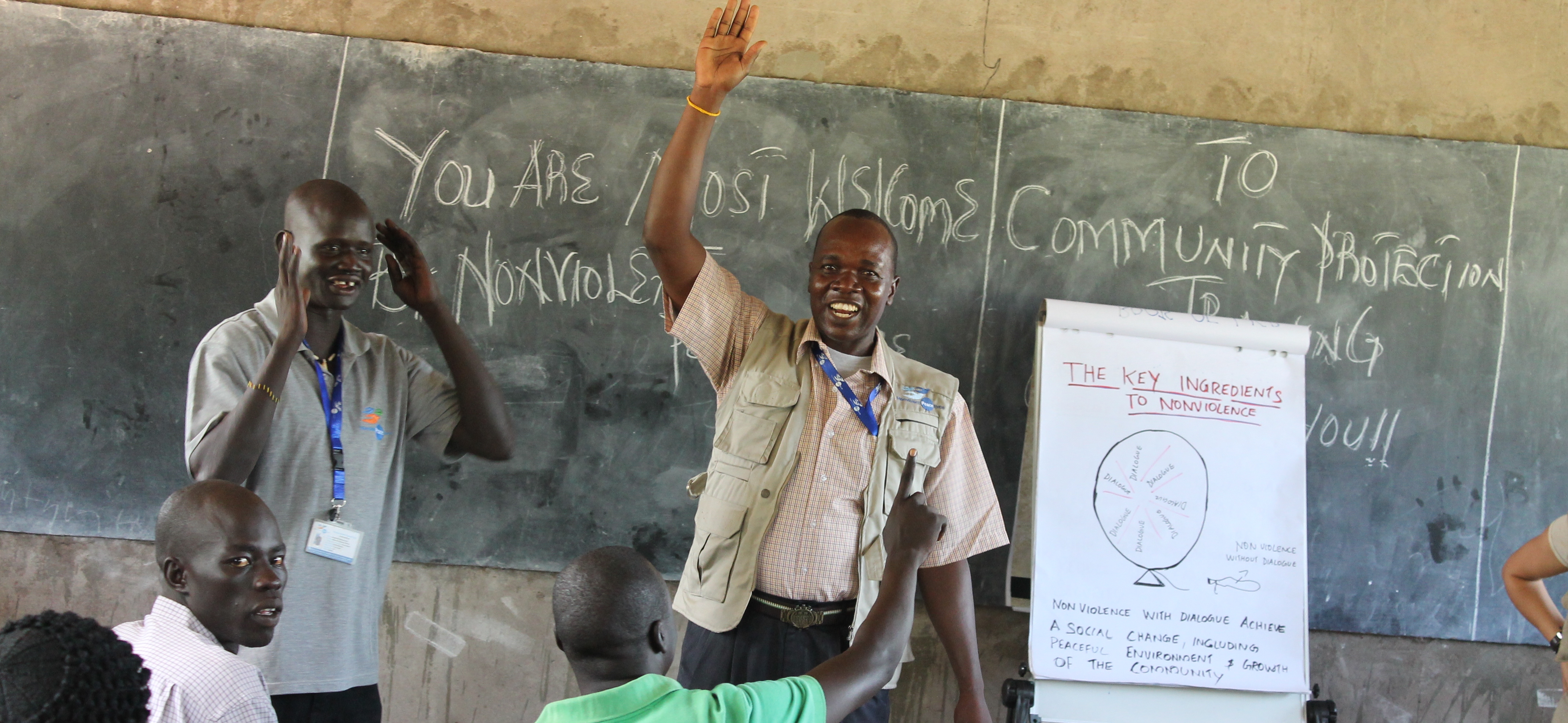
Learn about the work of Nonviolent Peaceforce, nominated by AFSC for the Nobel Peace Prize.
As a recipient of the Nobel Peace Prize in 1947, AFSC is able to nominate a candidate for the peace prize to the Oslo Committee every year. Earlier this year, we announced our 2016 nomination, Nonviolent Peaceforce—an unarmed, paid civilian protection force that fosters dialogue among parties in conflict and provides a protective presence for threatened civilians.
In October of 2015, the United Nations published a report that stated that “Unarmed civilian protection is a method for the direct protection of civilians and violence reduction that has grown in practice and recognition. In the last few years, it has especially proven its effectiveness to protect women and girls.”
That same report specifically highlights the work of Nonviolent Peaceforce and other organizations that “provide direct physical protection by presence, and who strengthen local protection mechanisms. This includes, for example, protective accompaniment and inter-positioning, ceasefire monitoring, rumor control, early warning and early response, confidence building, multi-track dialogue and local-level mediation and supporting local organizations committed to protection, reconciliation and human rights."
 Founded in 2002, Nonviolent Peaceforce now works in South Sudan, Ukraine, Myanmar, the Philippines, and most recently, Syria, where personnel are on the ground and planning trainings with local groups. The organization has reunited child soldiers with their families and helped create weapons-free zones in conflict areas. In South Sudan, its Women's Security Teams have mitigated violence against women, dramatically lessening the number of rapes that women experience while gathering water or firewood for their families.
Founded in 2002, Nonviolent Peaceforce now works in South Sudan, Ukraine, Myanmar, the Philippines, and most recently, Syria, where personnel are on the ground and planning trainings with local groups. The organization has reunited child soldiers with their families and helped create weapons-free zones in conflict areas. In South Sudan, its Women's Security Teams have mitigated violence against women, dramatically lessening the number of rapes that women experience while gathering water or firewood for their families.
In our nominating letter, AFSC wrote: “The work of Nonviolent Peaceforce is not to shrink from violence, but to meet it directly, while refusing to add to that violence in the process of doing so. As ever, the work of peacemakers is not to step away from conflict, but to step toward it, with the tools and conviction to engage conflict in ways that are constructive rather than destructive.”
- Read AFSC’s nomination letter.
- To learn more about the nomination criteria for nominations and to submit nominations through May 15, visit quakernobel.org.